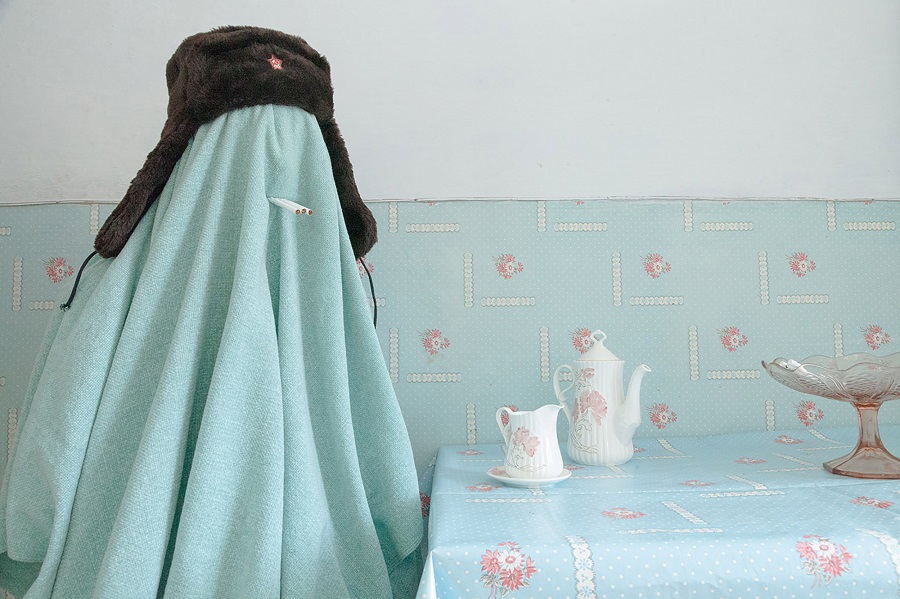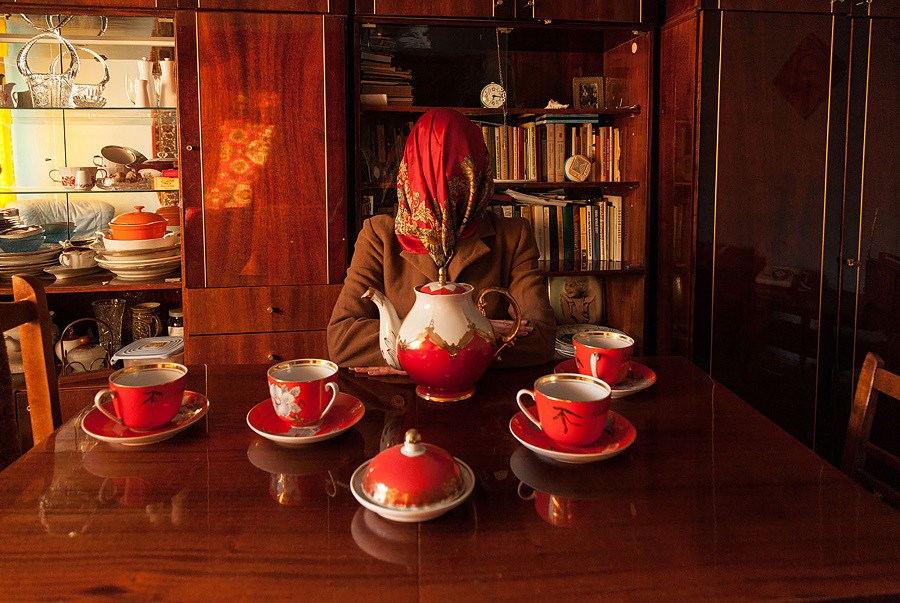The conceptual exhibition “Home before dark” by the Italian-Ukrainian visual artist Sofia Chotyrbok, from February 24 to March XNUMX, is set up in the multimedia center “Mala stanisa” at the National Gallery in Skopje.
The photo exhibition stems from a biographical episode of Sofia Chotirbock related to the request for Italian citizenship, which meant giving up her native Ukrainian citizenship.
She lives in Milan, where she graduated in photography, and her research focuses on the theme of identity in post-Soviet society, migration and the archive as intimate and domestic memory, transformed into universal human matter through photography, video and fabric.
What kind of personal and psychological process is the search for one’s own identity?
– The search for identity is a necessary and potentially endless process. We are constantly evolving beings in all aspects of life. There is neither beginning nor end, but a series of basic episodes. In my experience there are three (identities), each of which “gifted” me its own passport: the Soviet Union, the newly created Ukraine, and Italy. Three different contexts that shaped me as a person, enriching my identity heritage.

I grew up as a Ukrainian, knowing the past of my homeland, but in an Italian context. When I decided to submit documents for Italian citizenship, I became aware that the moment I received an Italian passport, I would have to give up the Ukrainian one. A rigid and sterile bureaucratic gesture raised in me a series of questions about what identity is. Then I began to reconstruct the nuances of my life through photography.
It was a deep journey into my memories and aspirations, the beginning of which was confusing and exhausting, because no document or border can encompass the multiple states of becoming. Rejecting such castration allows me, as an artist and as a woman, to have a richer and more layered view of human experience and identity, in the continuous relationship between the intimate and social spheres.
Why did you decide on photography as a medium of expressing your artistic visions?
– I don’t feel that I chose the photo, but I think that it chose me. When I was born, in Ukraine, my room was the living room at home, where all the family albums were in the cupboards and various pieces of furniture. I grew up looking at those pictures over and over again. Photo albums, which are no longer used, are wonderful objects. The smell of the paper, the colors or the black and white, the sound when flipping, they are all living things.
I think that’s exactly what marked me. I can’t pinpoint a specific moment when I decided to fully dedicate myself to photography, it was a fluid and natural process. I have been studying photography since adolescence, it is a natural tool for me: the first one I turn to to understand and represent reality.
When was the project “Home before dark” created and what role does the environment in which you create it play in the creation of the artwork?
– The “Home Before Dark” project was born at the beginning of 2020, when after several years I decided to go on a trip to my native country. I wondered about the Ukrainian identity, about its past, about my interrupted life. I have often wondered who I am, what I feel about the passport and how I can present such an intimate relationship. During this trip, the first of a long series, I lived in my grandmother’s house, and the “krushchevka” (Soviet apartment) stopped in time, with family items and relics dating back to Soviet times.
I was fascinated by the place which, in the woven tapestries hanging on the walls, contained the dust of several histories: from the most intimate one connected with the family sphere to the collective one of the Soviet world. The more I dug through the drawers and closets, the more I became obsessed with the objects. As I often say: I haunted the house and the house haunted me.
Such an environment steeped in memories could not be reduced to a background, therefore its narrative quality became the core of my conceptual and aesthetic representation. The environment thus becomes the protagonist of the image on the same level as the subject in the foreground, with which it is deeply connected by chromatic, expressive and narrative relationships.
What feelings do you have about the opportunity to present your art in Skopje?
– I have always been fascinated by Eastern countries and Slavic peoples, a passion born of instinctive affinity rather than any real personal or rational motivation. A few years ago, for some reason that makes me smile today, I explored Skopje through “googlemaps” with the promise that one day I would visit it. Later I happened to read about the history of North Macedonia and this new knowledge shaped and enriched the reasons for that attraction.
Although Macedonian history is undoubtedly different from Ukrainian history, I believe that there is a strong closeness in the search to confirm one’s own identity. Presenting my work in Skopje is for me a great opportunity and at the same time an honor – the realization of a small dream. This is a chance to enrich my personal and cultural identity by facing something very familiar, yet new and distant, fascinating and unknown.
I hope that something similar will happen to the visitors who will see the exhibition: to recognize in the photographic narrative of “Home Before Dark” something that belongs to seemingly distant worlds, with which, however, one is closely connected with personal, intimate experiences and with the experiences of the ancestors.
(The interview was published in “Kulturen Pechat” number 219, in the print edition of the newspaper “Sloboden Pechat” on 24-25.02.2024)

